You don’t need to wait until the weekend to make baby back ribs. Cooked under pressure in an Instant Pot, my Sticky Asian Ribs recipe is ready in less than 90 minutes. Slathered with a sweet-savory caramelized glaze, these tender pork ribs are finger-licking good!
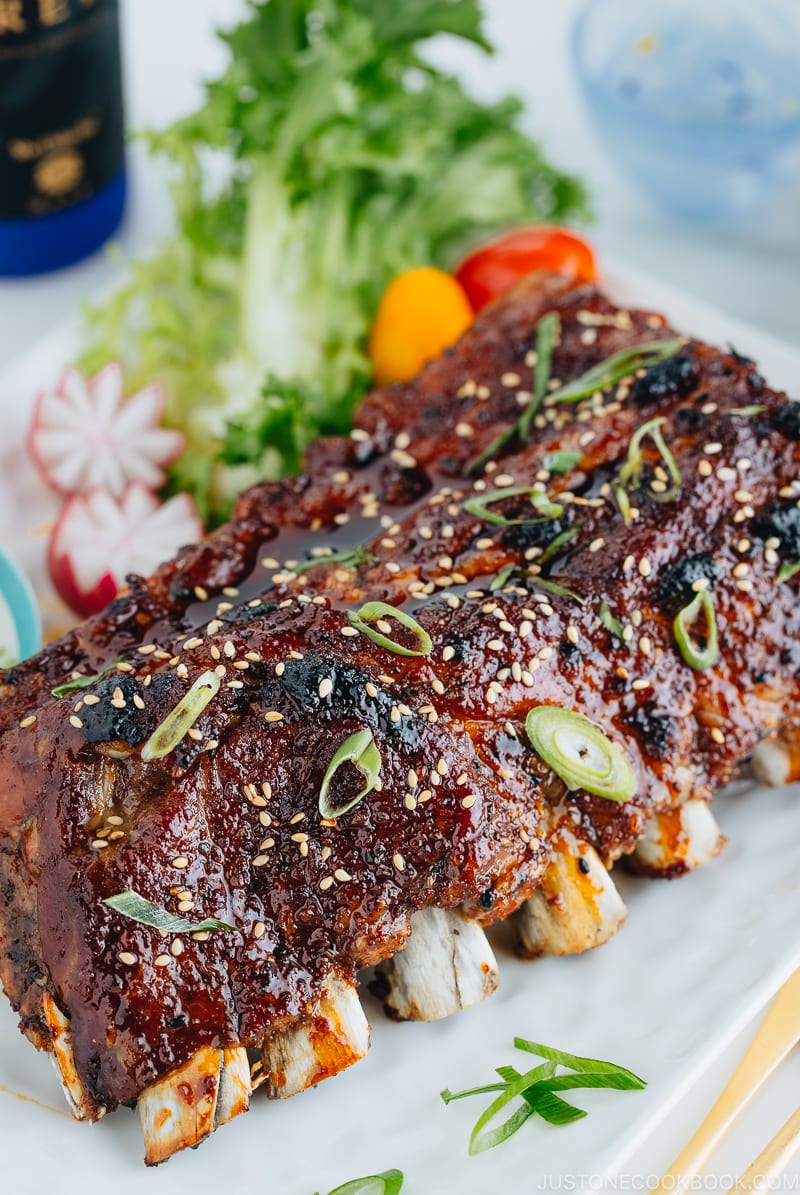
One of my cooking dreams was to make baby back ribs at home. I’m not a big meat eater, and on a daily basis, I eat more vegetables than meat. However, I have a soft spot for My belief (Japanese BBQ) and fall-off-the-bone baby back ribs smothered with a sweet-savory delicious sauce, which I discovered when I came to America.
Since our good friend John makes killer smoked baby back ribsMr. JOC and I didn’t have to get our own smoker and make our own. The only problem was that I couldn’t eat good ribs when I want to eat them. That’s when I started to make my ribs in the Instant Pot. Today I’ll show you our family’s favorite, Instant Pot Sticky Asian Ribs (Sweet and spicy spare ribs).
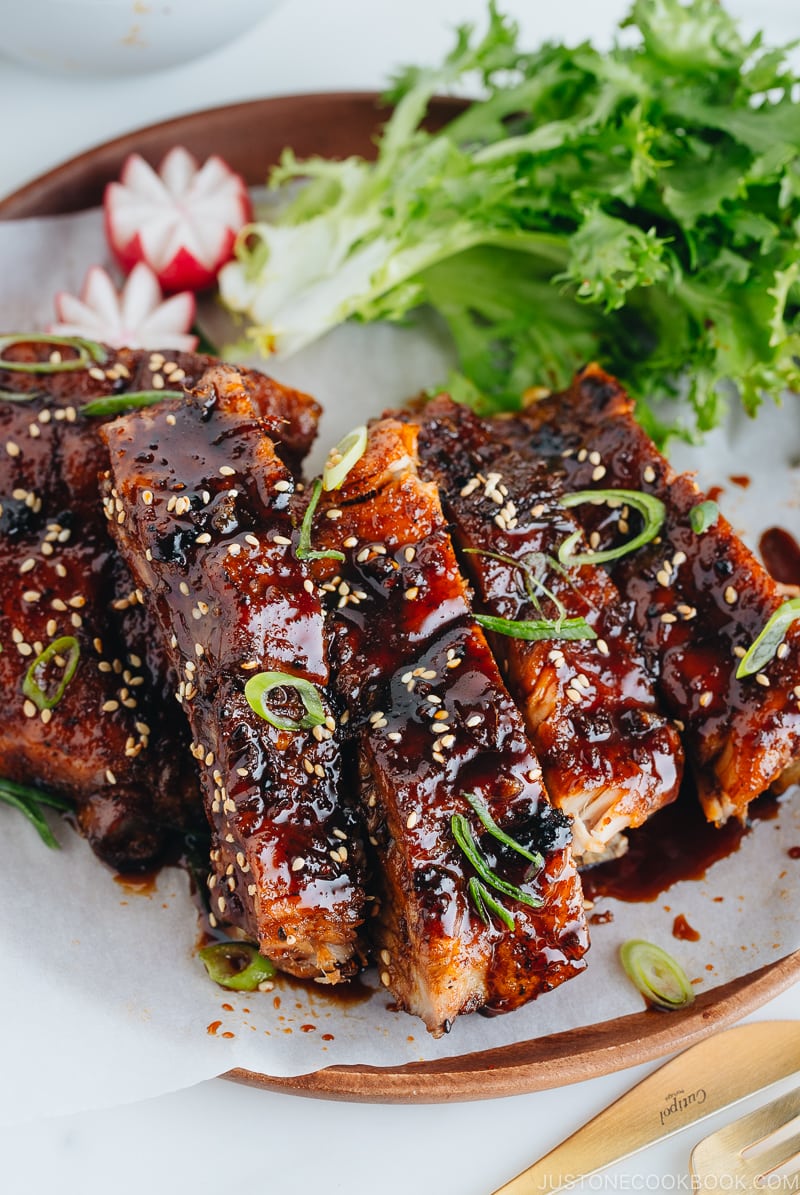

Making Ribs in the Instant Pot
Until you give this recipe a try, you probably won’t believe how amazing this recipe and the Instant Pot are! Compared to the common 2-to-3-hour slow-cooking oven method, cooking baby back ribs in the pressure cooker drastically cuts down the cooking time. And it comes together super fast for a weeknight meal.
Without the pressure cooker, there is no way you can eat fall-off-the-bone ribs in less than 90 minutes from start to finish, which includes the 30-minute resting time for the ribs with a dry rub.
Pressure-cooking ribs for 25-30 minutes is plenty for the meat to come off the bone. You will need to use the oven (broiler) to finish it off, but that’s just several minutes. Too easy? You must give it a try!
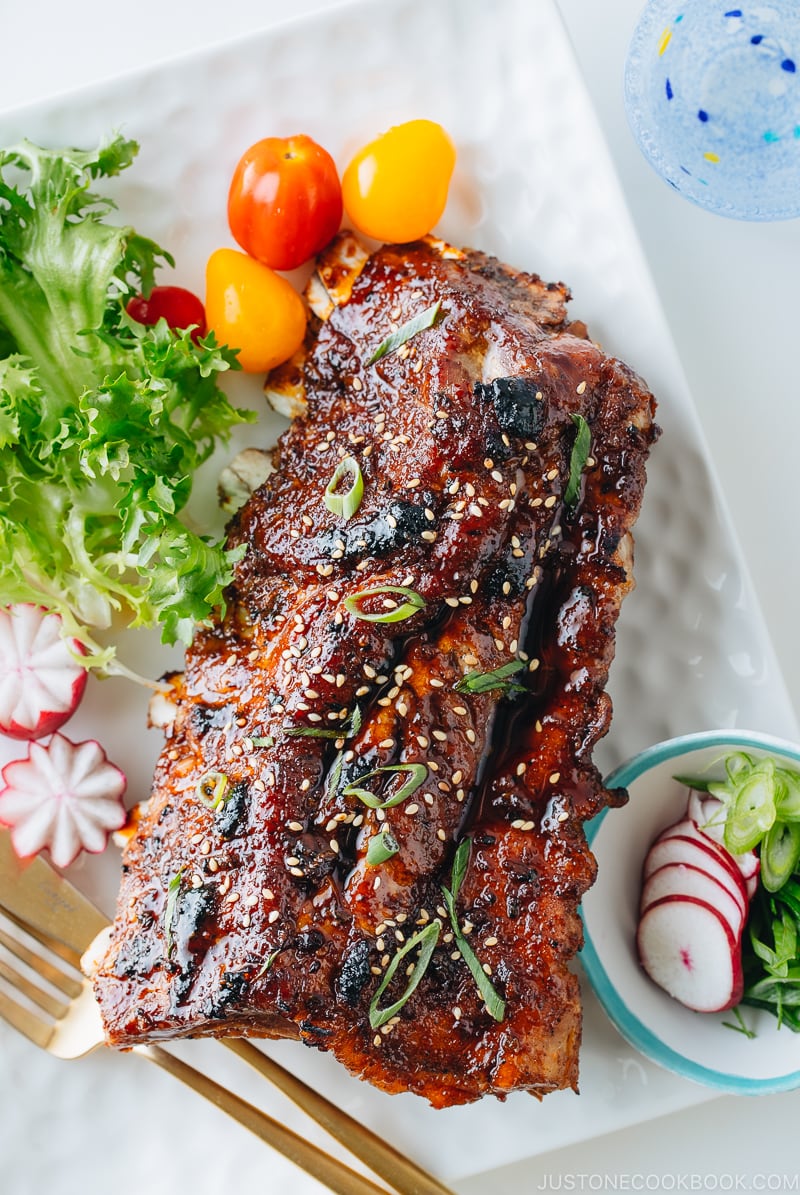

Delicious Sticky Asian Sauce
You can use this recipe as a base for American-style ribs. Rub in the baby back ribs with your go-to dry rub, cook in the Instant Pot, and apply homemade/store-bought BBQ sauce before placing the ribs into the oven to broil.
However, I want to introduce you to this delicious Sticky Asian Sauce today! All you need is the typical Japanese condiments: sake, mirin, soy sauce, and rice vinegar. I sweetened the sauce with brown sugar and honey and gave the sauce a kick with garlic and ginger.
With this sauce, this dish goes well with even rice or noodles! Isn’t it nice to add variations to your baby back rib recipes?
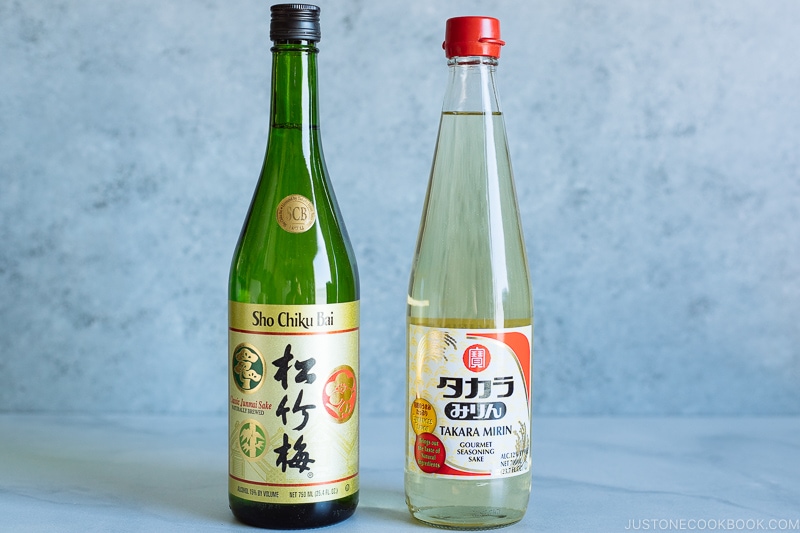

If you are new to Japanese cooking and want to know more about both sake and mirin, the essential condiments for Japanese cooking, you can find more information on each condiment on these pages.
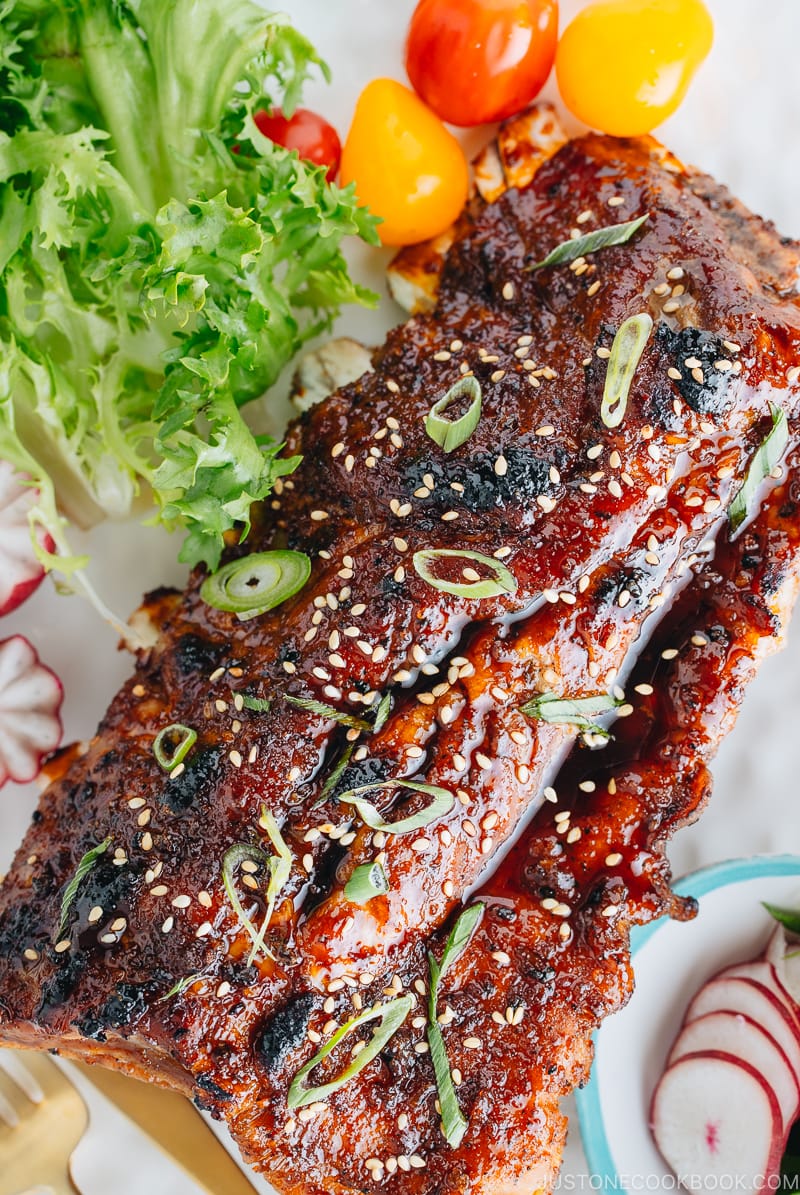

5 Tips to Make the Best Sticky Asian Ribs
Even though this recipe is pretty straightforward, I thought I’d give some tips that I found important.
1. Remove membrane
For the very first ribs I made, I completely forgot to remove the membrane, so I thought I would add a reminder here. The membrane is white, thin, connective tissue and located on the back (the bone side) of the ribs. Your butcher may already have the membrane removed. If not, you can ask them to remove it for you.
If you buy already packaged ribs, then you can remove the membrane yourself very easily. Just flip the ribs so the top (meaty part) is face down. Pull the corner of the membrane using a paper towel because it’s slippery. No special skills are needed here, just use your fingers and a paper towel to pull it off.
2. Use a dry rub
The flavor in the baby back ribs starts with the dry rub. This mix of seasonings and salt helps break down the meat’s fibers in the meat to create a complex depth in flavor.
The dry rub is a mixture of only dry seasonings and you need to rub them into the meat and set it aside for 30 minutes. The dry rub that I use for this recipe is a simple concoction of salt, black pepper, white pepper, and shichimi togarashi (Japanese Seven Spice). Shichimi togarashi is a beloved Japanese spice blend made of Japanese chili powder, orange peel, sesame seeds, Japanese pepper, ginger, and seaweed. It gives a spicy, citrusy, and nutty flavor to everything you sprinkle on.
3. Use Apple Cider Vinegar
The acidity in the vinegar breaks down the ligaments, tenderizes the meat, and adds some sweetness. I use a mix of water and apple cider vinegar to flavor my ribs as they cook.
4. Place ribs vertically
To support the weight, make sure to place the rack with the ends of the ribs facing up and on top of the wire rack without touching the liquid.
5. Finish off in the broiler/grill
After pressure cooking, the meat is super tender but looks rather steamed. Therefore, it’s important to finish off the ribs in the broiler or over the grill to give some nice char. The sauce you apply to the ribs will be caramelized in high heat, and it gives a luscious look to the baby back ribs.
Extra Tip: Gently remove the ribs from the Instant Pot
No, I’m not joking, the meat is so tender that it might fall off the bone (and yes, that happened to me). The pressure cooking time is 25-30 minutes. If the presentation is important to you, cook for 25 minutes as I do in this recipe. It is still tender, but the meat won’t’ fall off the bone too easily.
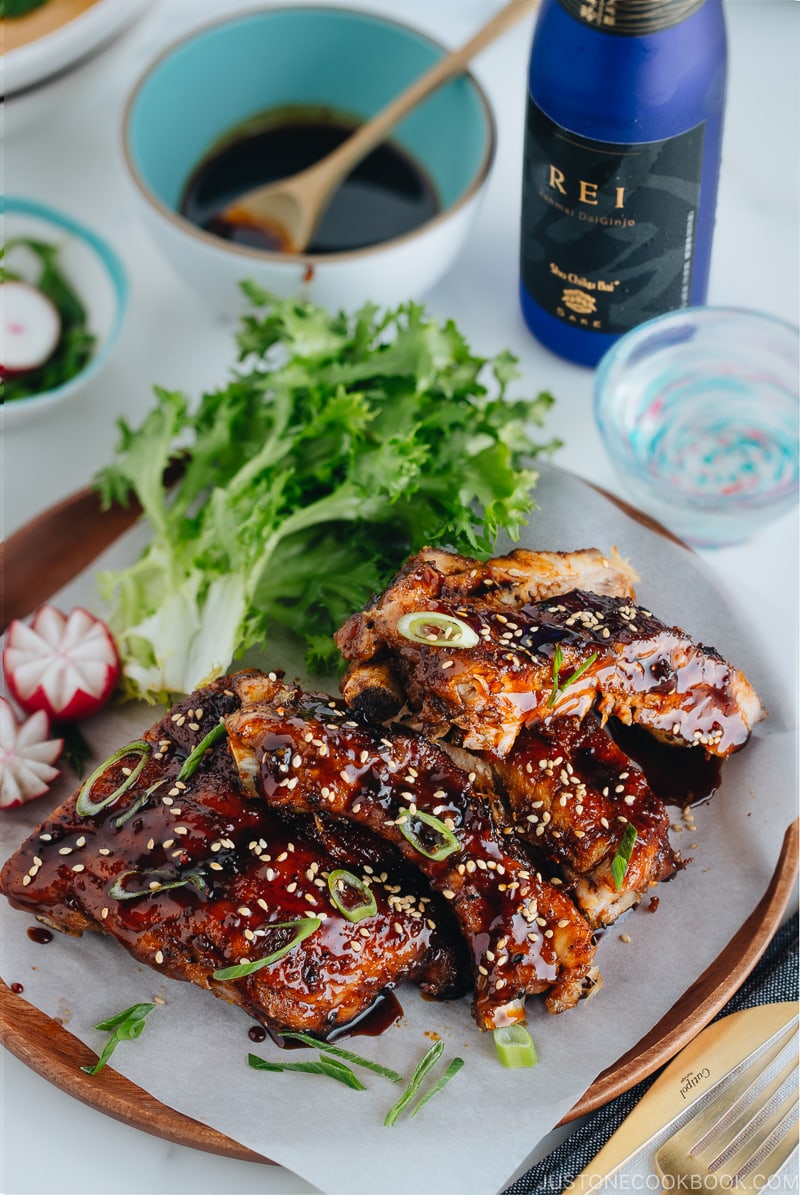

Sake Pairing with Sho Chiku Bai REI Junmai Daiginjo
We paired these tender juicy fall-off-the-bone ribs with the exquisite Sho Chiku Bai REI Junmai Daiginjo. REI is one of our favorite sakes as it’s versatile and can be enjoyed with a wide range of dishes.
As you bite into the juicy ribs slathered in the sweet and tangy sauce, sip REI, and the cold and smooth sake cuts right through the fatty meat with its fruity flavors. It instantly refreshes your taste buds and leaves you wanting another sip and another big bite of the ribs.
The floral characteristics of Sho Chiku Bai REI Junmai Dainginjo compliment the flavors of the ribs really well and we highly recommend pairing it with flavorful dishes like these ribs.
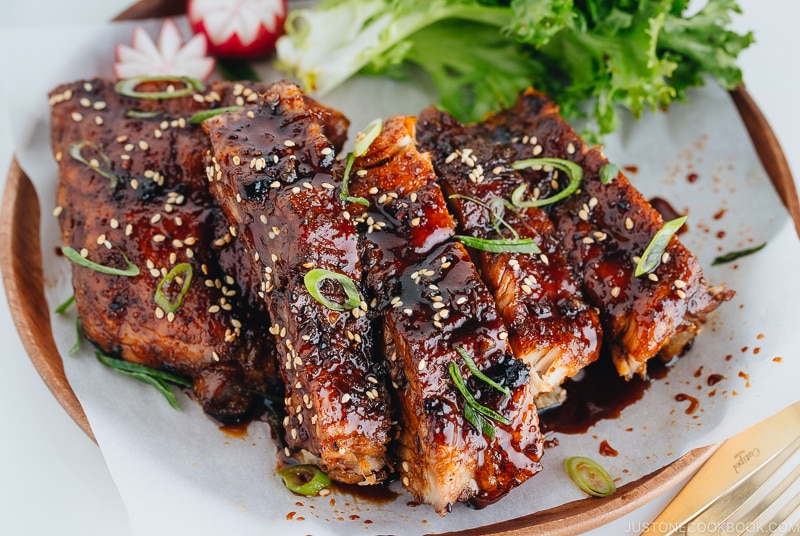

Wish to learn more about Japanese cooking? Sign up for our free newsletter to receive cooking tips & recipe updates! And stay in touch with me on Facebook, Pinterest, YouTubeand Instagram.
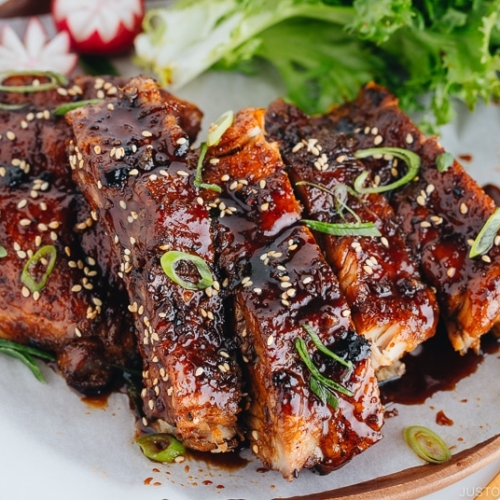

Instant Pot Sticky Asian Ribs
You don‘t need to wait until the weekend to make baby back ribs. Cooked under pressure in an Instant Pot, my Sticky Asian Ribs recipe is ready in less than 90 minutes. Slathered with a sweet-savory caramelized glaze, these tender pork ribs are finger-licking good!
Servings: 3 (to 4 as main dish)
Ingredients
Prevent your screen from going dark
Instructions
To Pressure Cook the Ribs
Nutrition
Nutrition Facts
Instant Pot Sticky Asian Ribs
Amount per Serving
% Daily Value*
* Percent Daily Values are based on a 2000 calorie diet.
©JustOneCookbook.com Content and photographs are copyright protected. Sharing of this recipe is both encouraged and appreciated. Copying and/or pasting full recipes to any website or social media is strictly prohibited. Please view my photo use policy here.
Editor’s Note: This post was originally published on May 31, 2019. It was republished on July 7, 2024.

